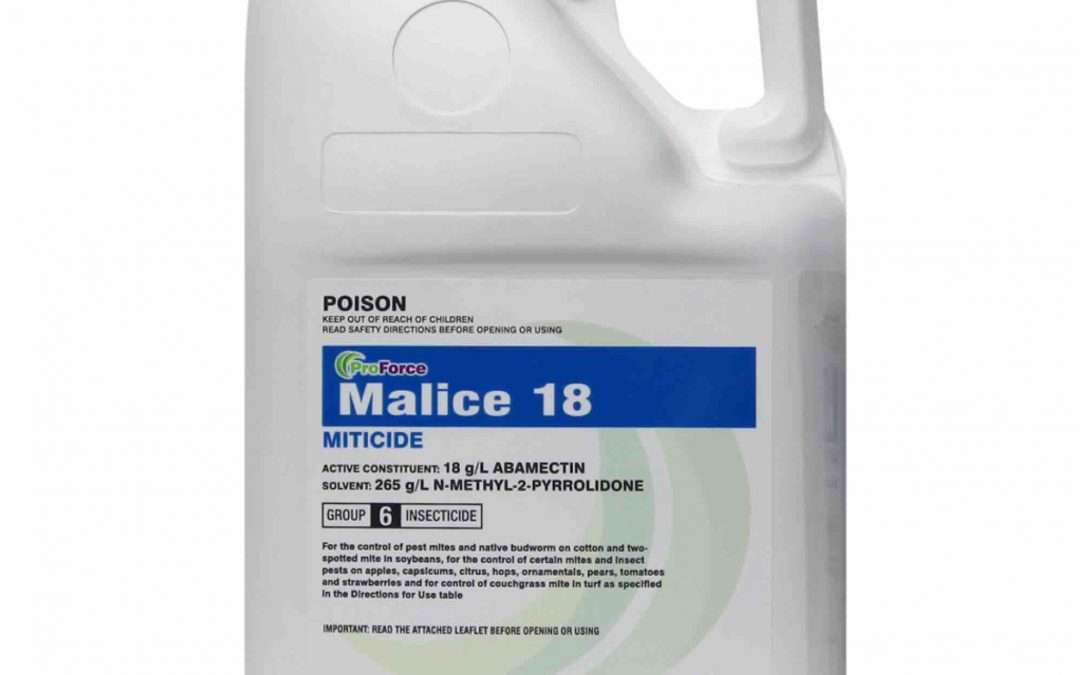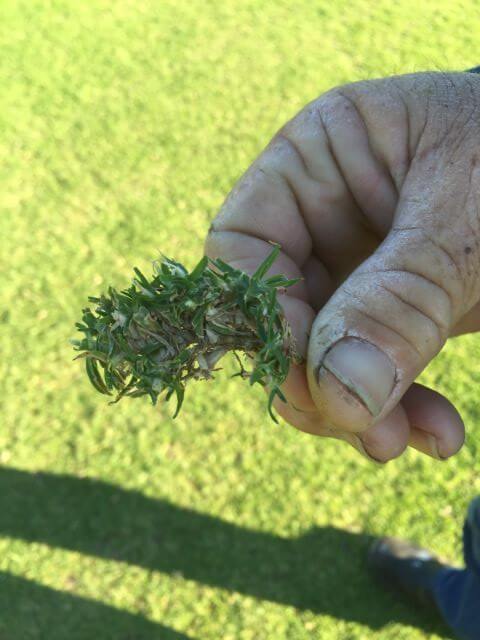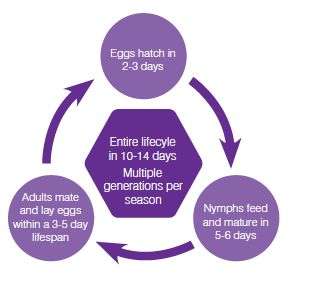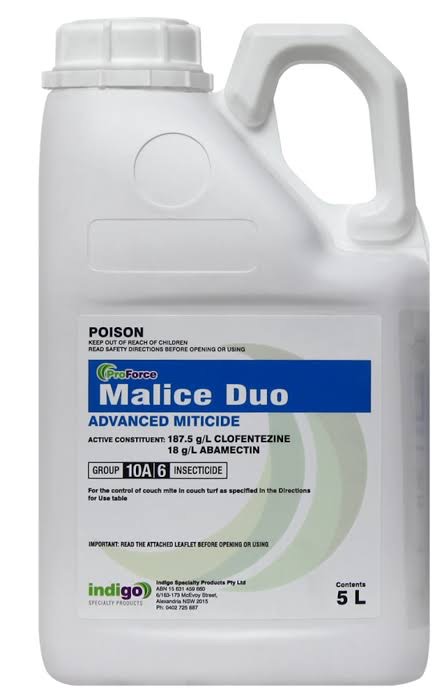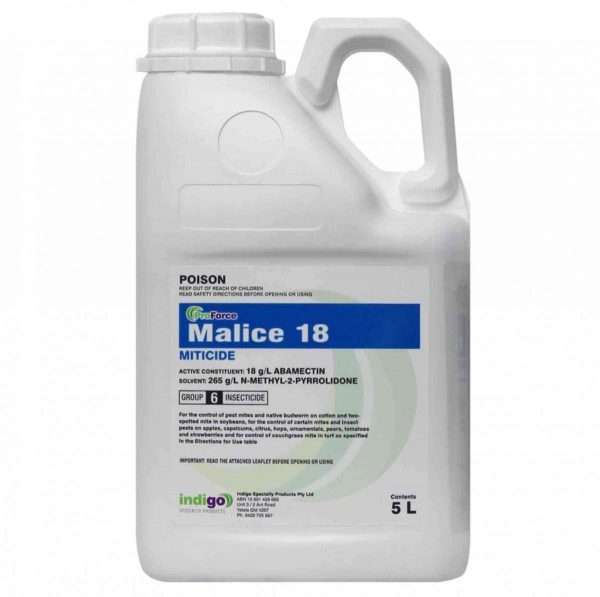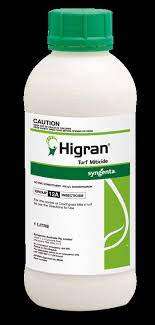Turf Miticides.
Turf mites have been recognised as problem for over 70 years in Australia. However, there has never been a detailed investigation into the types of mites that are present and what turf types they effect.
A HAL funded report in 2011 by Peter McMaugh was entitled “Mite damage – a survey of 4 warm season turf grasses” and has an in depth discussion of how problematic this pest is in turf grass.
Mites specialize in specific turfgrass species, and can be a problem in Couch, Kikuyu, Zoysia and Buffalograss. Zoysiagrass mite causes more damage to its host than the Couch mite because Zoysia is slower growing, and does not recover so quickly.
In the early Spring, mite populations can quickly build up as turfgrass produces new shoots with the onset of warmer weather. The new shoots act as a readily available food source for this difficult to control turf pest, and in the right conditions populations can quickly explode.
In warmer climates such as QLD, Couch mites can be active throughout the year. In Sydney, NSW and the ACT, where the turf goes dormant in the Winter, mites are most active in warm Summer weather. However, you see most damage in the Spring as turf comes out of dormancy.
Turf mites lay their eggs under leaf sheaths. These eggs then hatch and move quickly through two nymph stages into adults.
Mite Damage Symptoms in Turf.
You must realise that if you see mite damage it indicates that an active mite population has already been present for several weeks. This is because Couch mite symptoms generally take several weeks to develop.
Classic mite damage symptoms include:
- The “witches broom” at growth tips of leaves.
- What is called “porpoising” of stolons and
- Patchy discolouration with an overall decline in turf vigour.
- In Kikuyu, diseases like Dreschlera leaf spot often follow on from a mite infection. This results in a weak turf cover that has a low wear tolerance.
The Problem.
Turf grass mites have very short life cycles of only 10 to 14 days. This means that under the right conditions populations can quickly become a problem. For more detailed information on the turf mite life cycle.
Non Chemical Control of Turf Mites.
- Fertilise properly.
- Irrigate properly.
- Mow at the right height of cut.
- Box off clippings and take them offsite from infected areas.
- Use resistant cultivars.
Fertilise Properly.
Irrigation.
Its important that you water turf properly. Mites tend to favour dry turf so if you keep water up to your turfgrass it tends to discourange mite activity.
Mowing.
- If you can raise your height of cut it disrupts mite activity and makes them more vulnerable to natural predators.
- Mites will survive and reproduce in grass clippings. So if you remove and dispose of these off site it moves the problem.
Hygiene.
Resistant Cultivars.
- Santa Ana is resistant to mites. Other Couch varieties may also have some degree of resistance, although they may not be as tolerant as Santa Ana.
Chemical Control of Turf Mites.
Chemical control of turf mites is a challenge for two reasons:
- How well turf miticides work depends on how large the mite population is.
- To get the best results from contact miticides you need to get any product underneath the leaf sheath where the mite is.
Tips to get the Best Results from Miticides.
- Feed your turf in the Spring to give it the best possible chance to outgrow mites.
- Treat the turf early in the season and rotate chemical options. By treating turf early in the season it tends to be a major step toward ensuring season long control.
- Maximise spray coverage by using a quality spreader like Optispread 1000.
- Monitor water quality. Clofentazine is one of the core turf miticides in use in Australia, and is highly susceptible to alkaline hydrolysis. Use Manta Ray pH buffer to counter this.
- As soon as new shoots appear start your program.
Management Calendar NSW | |||||||
Sep | Oct | Nov | Dec | Jan | Feb | Mar | |
App 1 | Abamectin | ||||||
App 2 | Malice Duo | ||||||
App 3 | Malice Duo | ||||||
App 4 | Abamectin | ||||||
Management Calendar ACT | |||||||
Sep | Oct | Nov | Dec | Jan | Feb | Mar | |
App 1 | Abamectin | ||||||
App 2 | Malice Duo | ||||||
App 3 | Malice Duo | ||||||
Tips | |||||||
Surfactant | Apply Optispread 1000 with Abamectin to ensure good coverage | ||||||
pH buffer | Apply Manta Ray to stop alkaline hydrolysis of clofentazine | ||||||
Abamectin.
Abamectin which is the active ingredient in Malice® and Thumper® is the most widely used turf miticide. A naturally occurring microorganism called, Streptomyces avermitiliis is the main ingredient of abamectin and this is both a contact and translaminar miticide. Once it enters the leaf, it forms a long lasting chemical reservoir, giving up to 28 days of control. Mites are quickly paralyzed and it takes three to four days for it to kick in. So even though mites may be visible they cannot feed and then die.
Other Turf Miticides.
- Indigo Malice Duo® combines the knockdown of abamectin with the residual of clofentazine. As it is effective against adults and eggs, populations don’t bounce back after treatment.
- Bifenthrin is a pyrethroid-based contact miticide and so needs good turf coverage to work properly. It provides 7 to 21 days of control.
- Synthetic pyrethroids like bifenthrin are short-term solutions that givea quick knockdown of Couch mites. There is a school of thought however, that when you use broad-spectrum insecticides like these it reduces natural predators of the mites. Over time it then makes the problem worse.
- Clofentazine (Quali-Pro Prophesy®). It is important to get thorough coverage of all plant parts. This works on both mite eggs and the immature stages but not on adults.
- It is best to use Clofentazine early in the season before mite populations increase.
- Clofentazine is slow-acting but provides up to 45 days of control.
- Diafenthiuron (Waldo®, and Higran®) gives up to 4 weeks control. It has a strong contact and translaminar effect. It causes rapid paralyses of mites so they stop feeding and is best as an early curative miticide to treat nymphs and adults.
- Ideally it should follow an initial knockdown of abamectin. It is dangerous to bees.
- Etoxazole (Finesse®) is a growth regulator for mites and inhibits the molting process. It works as both a contact and translaminar miticide giving up to 28 days of control. Finesse is active on the egg, larvae, and nymphal stages but has little effect on adult mites. However, adult female mites do not produce viable eggs.
Table of Turf Miticides in Australia.
Turf Miticides in Australia | ||||||||
Active | Product | Schedule | IRAC Group | Mode of Action | Stage of Activity | Water Volume L/Ha | Droplet Size/Nozzle Selection | Toxic to Bees |
Abamectin | Thumper Agador Malice | S6 | 6 | Translaminar | Controls all feeding stages of mites | 250-500 | Coarse Droplets | Yes |
Abamectin + Clofentazine | Malice Duo | S6 | 6 + 10A | Translaminar and Contact with 45 day residual | Controls all feeding stages of mites plus eggs | 250-500 | Coarse Droplets | Yes |
Bifenthrin (not registered) | Various | 3A | Contact | Adults | 200-500 | Coarse | Yes | |
Clofentazine | QualiPro Prophesy Apollo | S5 | 10A | Contact with long residual | Eggs and early larvae | 300-500 | Coarse Droplets | Yes |
Diafenthiuron | Waldo Hygran | S5 | 12A | Contact, translaminar and vapour | Actiive against feeding stages. Limited effect on eggs | 300-500 | Coarse | Yes |
Etoxazole | Finesse | 10B | 10B | Translaminar and residual | Immature mites inc eggs most susceptible. No effect on adult mites. Any eggs laid are not viable | 300-500 | Coarse | Low |
Methidathion (Not in NSW or ACT) | Supracide | S7 | 1B | Partially systemic plus contact. Up to 5 week residual | Eggs and adults | 300-400 | Coarse | Yes |
Tips | ||||||||
Surfactant | Apply Optispread 1000 to Abamectin, Diafenthiuron, Methidathion | |||||||
pH buffer | Apply Manta Ray to stop alkaline hydrolysis of clofentazine | |||||||

Jerry Spencer
Graduated from Newcastle University with an Hons Degree in Soil Science in 1988, Jerry then worked for the Sports Turf Research Institute (STRI) as a turf agronomist before emigrating to Australia in 1993.
He followed this by gaining a Grad Dip in Business Management from UTS. He has worked in a number of management roles for companies as diverse as Samsung Australia, Arthur Yates and Paton Fertilizers.
He has always had a strong affinity with the Australian sports turf industry and as a result he established Gilba Solutions as an independent sports turf consultancy in 1993. Jerry has written over 100 articles and two books on a wide range of topics such as Turf Pesticides and Nutrition which have been published in Australia and overseas.

